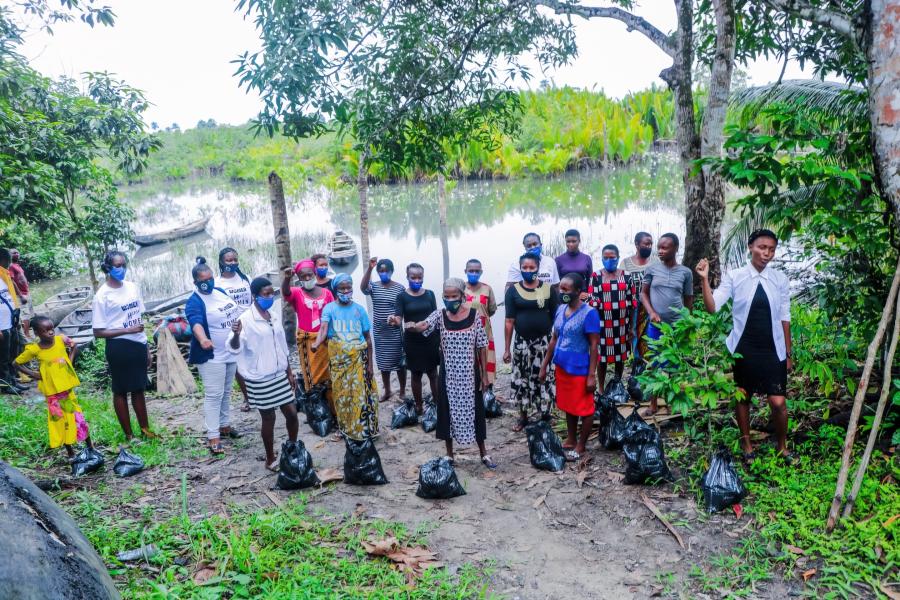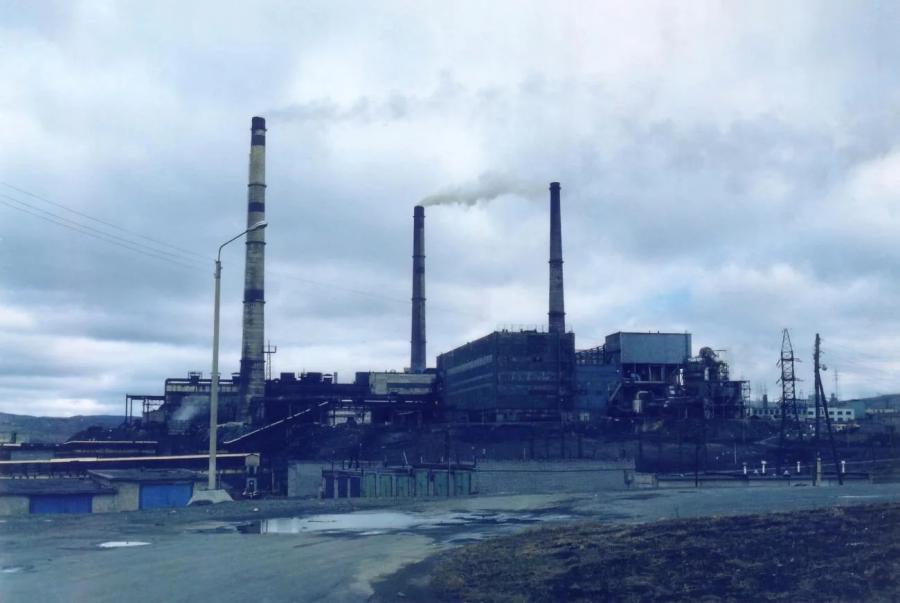One of the greatest dangers in development policy lies in the tendency to give more material aspects of growth an overriding disproportionate emphasis. The end may be forgotten in preoccupation with the means. Human rights may be submerged and human beings seen only as instruments of production rather than as free entities [in] whose welfare and cultural advance the project is intended.
These words, referring to hydroelectric dam projects in Africa, were written 25 years ago in the 1963 "Report of the United Nations Conference on the Application of Science and Technology for the Benefit of Less Developed Areas." They still hold true today. Hydroelectric dams, financed by the World Bank and other large international lenders, are being built at an alarming rate with little regard for their impact on the indigenous peoples of the region. These projects are often viewed as a panacea for developing countries. Unfortunately, the hidden costs of such projects frequently go unnoticed.
Health Impacts on Indigenous Peoples
Hydroelectric dams can have a great impact on the health of a region's residents. Severe health problems often result from the filling of the reservoir that holds the water for powering the project's electric generators. Put simply, large dams create vast pools of standing water that serve as the perfect breeding ground for disease-carrying insects. In the past, creation of dams has promoted the spread of malaria, hepatitis, schistosomiasis and river blindness. Despite the fact that adverse health consequences can now be accurately predicted given the particular region and climate, the construction of dams continues. As one health expert noted:
Economic growth through the dissemination of production benefits should promote good health rather than create illness, which is frequently the case today. Sufficient evidence has now accumulated to show that the ecological consequences of dam development, including the increase of parasitic and infectious diseases, are predictable.
Ample documentation is available on the impact of hydroelectric dams on the health of indigenous populations. The most carefully documented study concerns the pestilence that ravaged Egypt in the wake of the completion of the Aswan High Dam. Dr. Robert J. Goodland, an ecologist for the World Bank, estimated that before the reservoir serving the dam was flooded, 5 percent of children in the dam area had been infected with schistosomiasis (an incurable disease transmitted by snails that inhabit stagnant water). Today, 90 percent of the children are infected. Other significant health problems have been associated with the Tembling Dam in Malaysia, the Kariba Dam in Zambia and Zimbabwe and the Volta project in Ghana.
Engineering and Safety Problems
Frequently, hydroelectric dam projects are rushed through the planning stages in a slipshod manner because of time and financial constraints. Hurried planning often results in a disregard for the possible effects on residents of the area in the event of a mishap. In fact, one expert points toward a lack of critical review of dam projects as the cause of past environmental disasters. He also notes that inadequate planning, poor design and improper construction have resulted in a one percent structural failure and collapse rate of dams worldwide.
Large hydroelectric dams are especially vulnerable to landslides. The United States group assisting the Chinese government with the Three Gorges project has voiced extreme concern over the poor landslide protection planned for that dam. In 1963, a landslide fell into the reservoir of Italy's Vaiont Dam, causing a tidal wave that overflowed the dam and killed 2,000 people. Other dams with well-documented histories of safety and/or operational problems include the Tarbela Dam in Pakistan, the Tablachaca Dam in Peru, the Saquling Dam in Indonesia, the Chixoy Dam in Guatemala and the Khao Laen Dam in Thailand.
Dams with shoddy construction are easy targets for saboteurs. Since many dams are built in Third World countries not known for political stability, the risk of a war-related catastrophe runs high. In Mozambique, the Cohora Bassa has become a pawn in the war between the socialist government and the rebels seeking its overthrow. To date, nearly 500 stainless steel pylons along the 560-mile corridor of transmission lines have been destroyed by the insurgents. The saboteurs originally used dynamite to destroy the pylons, but have now discovered that by simply loosening the nuts and bolts that hold the pylon to its base, the pylon will come crashing down under its own weight. As a result, the Cohora Bassa, a $2 billion dam built by 8,000 men excavating 273,000 cubic yards of rock, operates today at less than one percent of capacity.
A large hydroelectric dam could soon spark a war by virtue of its existence. Recently, Lee Ki Baeki, South Korea's defense minister, warned the North Korean government that Seoul would not allow them to build a proposed dam across the Han River. The South Koreans are concerned about their water supply and power generation, as well as the possible ecological consequences. Moreover, the government believes that the North Koreans would deliberately destroy the dam at some point, submerging railways and villages in South Korea, killing thousands of people. Undaunted, the North Koreans continue to work toward the completion of the dam.
Loss of Unique Resources
The construction of a hydroelectric dam often means the destruction of a unique natural resource that cannot be replenished. Unfortunately, this has deterred neither financiers nor construction companies from moving ahead with their projects.
Mexico and Guatemala are planning to build a series of dams on their common border, along the Usumacinta River and its tributaries, that would destroy two of the most important known historical archeological sites of the Mayan civilization, as well as sites that may still lie undiscovered in the dense tropical rain forest. The dams would need a reservoir of up to 500 square miles, which would necessitate destroying the ruins at Yaxchilan and Piedrias Negras. Despite the complaints of the Group of 100, a coalition of Mexican intellectuals concerned with ecological and cultural issues, construction plans continue. The Mexican government has not undertaken any study of the dam's effect on the Mayan sites; no study is planned for the future.
Hydroelectric dam projects also affect indigenous wildlife. The Nam Choan Dam, which the Thai government plans to build on the Kwae Yai River with funding provided by the World Bank [project has been halted at this time-ed.], is seen by many as a threat to the future of wildlife in Thailand. Twenty-five of 41 Thai mammal species (including all six national endangered species) would be destroyed by the project. The effects in Thailand are not unique. The Three Gorges project in China will destroy the habitats of many species of rare fish and mammals. The Balbina hydroelectric dam, currently under construction in the Brazilian Amazon, will destroy millions of trees and animals, including endangered monkeys, jaguars, birds and reptiles.
The Relocation of Indigenous Peoples
The negative effects of hydroelectric dam projects are nowhere more pronounced than in their ability to directly affect indigenous peoples through the destruction of their homeland. This problem is exacerbated by the resultant forced relocation. The Cuna Indians of Panama serve as an example of what can happen to a people that impedes progress on a dam project. The Bayano Hydroelectric Complex, built between 1972 and 1976, flooded 250 km² of the Bayano River Basin of eastern Panama; the reservoir sits on the land of the Cuna Indians. The energy produced by the destruction of their homeland goes directly to Panama City.
The reservoir created by the Bayano project cost the Cuna 80 percent of their homeland, yet they received nothing in return. They have suffered from a pronounced decline in agricultural productivity and have had to switch from farming to logging in an effort to eke out a living on what little remains of their reservation. This, in turn, is causing the rapid deforestation of the area. In addition, conflicts with non-indigenous peasants moving into the region have increased dramatically.
The two principal reasons for the Cuna's plight are shared by all indigenous people affected by a dam project. First, the government viewed the native people as "backward" and sought to uplift them to the level of modern society. Second, the government stressed financial and technical needs before human ones. Unfortunately, these factors are endemic when an indigenous people clash with a dam project. The Lacandón, an Indian tribe in the Amazon rain forest, will be relocated by the Usumacinta River project. Anthropologists warn that the Lacandón culture, which dates back to the Mayans, will be destroyed.
However, the largest forced relocation of indigenous peoples in the aftermath of hydroelectric dam construction has yet to occur. That relocation, caused by the Three Gorges project in China, will force the resettlement of 3.3 million people whose homes will be flooded by the dam's reservoir. Villages, farms, harbors, railroads, factories and communication lines will be destroyed. According to a plan submitted by the United States to the Chinese government, many of the inhabitants will suffer physical and psychological trauma as a result of the relocation from their ancestral homelands.
The trauma inflicted on displaced peoples is severe. Love of birthplace, no matter how inhospitable it may appear to strangers, has been recognized as a universal human characteristic. To be wrenched from one's home as a result of what seems to be an arbitrary and unjustifiable government action is especially difficult for isolated populations whose members (and their ancestors) have derived most of their support from local resources for as long as they can remember.
Another dam that was recently completed, the Batang Ai Hydroelectric Project near Lubok Antu, Malaysia, has already caused many of the ills forecasted for the Three Gorges project. An indigenous population, the Iban longhouse dwellers, has been uprooted. Almost every aspect of the Ibans' traditional life has been shattered by what the state government in Kuching believes is "necessary and proper development." The Ibans' houses have been destroyed, their hunting areas and ancient burial grounds are now under water. The Iban, like the Cuna before them, were not even given money for their land. They join the 50,000 indigenous people displaced by the Kariba Dam in Zambia and Zimbabwe and the 70,000 relocated by the Volta Dam in Ghana as victims of "necessary progress and development."
Water Quality Problems
Large hydroelectric dam projects in lesser-developed countries also adversely affect the quality of drinking water available to the native population. The Tucuruí Dam on the Tocantins River in Brazil is a $4 billion, 4,000-megawatt dam that was originally scheduled to begin generating power in December 1984. Its construction has been slowed, however, due to environmental concerns surrounding the plan to flood 760 square miles of tropical rain forest. In order to build the dam, the forest had to be cleared of all vegetation. Flooding non-cleared tropical areas caused severe water quality problems due to the buildup of hydrogen sulfides emitted from decomposing vegetation. The cheapest way to clear the land of vegetation is through the use of chemical defoliants.
The builder of the dam, Electronorte, contracted with CAPEMI for the deforestation. CAPEMI used a dioxin-based chemical similar to Agent Orange for the project. The chemicals were applied by workers who sprayed from canisters attached to their backs. As a result, workers and native populations were killed, and water supplies contaminated. The spraying was stopped after international environmental groups protested to the World Bank. Critics of the current Electronorte project in Brazil, the Balbina Dam over the Uatuma River, have voiced concerns that their water quality will be similarly affected. Other projects that have been identified with serious water quality problems include the Mantaro Dam in Peru and the Curua Una Dam in Brazil.
A related problem caused by the construction of large hydroelectric dams is siltation. The Aswan High Dam, built over 20 years ago, has severely eroded the Nile Delta. The coastline has moved inland a mile or more at some points. The resultant salt water intrusion in the delta means that farmers can no longer use delta water to irrigate their fields. The sedimentation caused in some areas has destroyed thousands of acres of once productive farmland. Critics of the Three Gorges project in China point to the Aswan High Dam as an example of what may happen to the area's farmlands. One estimate is that the new dam would prevent navigation of the Changjiang River by trapping sediment upstream. The harbor of the busy port city of Chongqing, 390 miles from the project, would be "totally silted up." Similar sedimentation problems have also been found at the Mangla Reservoir in Pakistan and the El Penol Reservoir in Colombia.
Conclusion
Giant hydroelectric dams have long symbolized humankind's ability to harness nature. However, in recent years, operational dams like Egypt's Aswan High Dam and others planned for Africa, Asia and Latin America have had a disastrous effect on the lives of indigenous peoples. The hidden costs must be analyzed in making the decision of whether to build these types of structures in the future.
Article copyright Cultural Survival, Inc.



